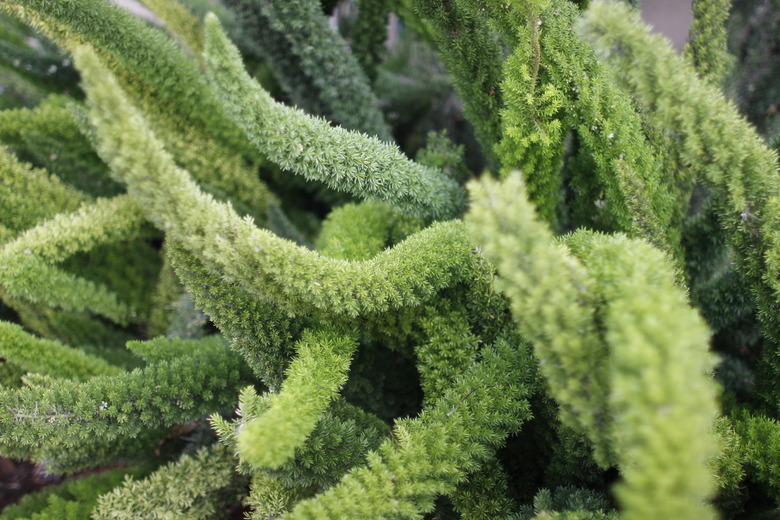Is Foxtail Fern Poisonous For Pets?
We may receive a commission on purchases made from links.
The foxtail fern (Asparagus densiflorus), commonly called asparagus fern, is grown as a houseplant and outdoors as a perennial in U.S. Department of Agriculture plant hardiness zones 9 through 11. While not an asparagus and not a fern, its arching branches and fine needles give it a light and airy appearance. A member of the asparagus family (Asparagaceae), all parts of the foxtail fern are poisonous for pets and humans, including the tiny white flowers and red berries.
Tip
The foxtail fern may cause vomiting, diarrhea and abdominal pain if eaten by dogs, cats, horses or humans. The sap also causes skin irritation ranging from red, swollen skin to blisters.
Asparagus Densiflorus Cultivars
Asparagus Densiflorus Cultivars
A foxtail cultivar, Asparagus densiflorus 'Myersii,' has foxtaillike or bottlebrushlike upright branches with short, dense, leaflike cladodes. Cladodes are short, flattened stems that look like needles. The plant grows up to 2 feet tall and 3 to 4 feet wide, and each brushy branch grows up to 2 1/2 inches wide. It is less likely to bloom and produce its fruits, making it a better choice for growing outside in the garden. It is less likely to be spread by birds and other wildlife, which scatter the seeds.
Asparagus densiflorus 'Sprengeri' has a looser growth pattern of cladodes on its branches, giving it an airier look than Myersii. The branches grow up to 6 feet long with an arching form. It may also bloom, with the tiny white flowers appearing in late spring and early summer. The red berries ripen in late summer and fall. Sprengeri is often grown as a hanging plant indoors and on sheltered porches and patios.
Planting the Foxtail Fern
Planting the Foxtail Fern
Both cultivars feature small thorns at the intersection of the cladodes and stems. The plants can be propagated by seed or by detaching the bulblets that develop along the roots. Plant the seeds or bulblets in moist potting soil and place the pot in a warm location until new growth appears. The seeds will germinate in four to six weeks, while new growth appears quickly from the transplanted bulblets.
Foxtail Fern Care
Foxtail Fern Care
Foxtail ferns prefer a well-draining soil in bright, indirect light. When planting outdoors, select a site in light or dappled shade and amend the garden bed with 2 to 3 inches of compost. Inside, use a potting mix for houseplants. Keep the soil moist but not waterlogged and fertilize regularly with a balanced liquid fertilizer.
Foxtail ferns grow rapidly, and when pot bound, they produce more flowers and berries. Plan to repot every three or four years. Pinch or trim back the foxtail fern's branches to maintain its shape. Keep all the trimmings, flowers and berries away from children and pets. In addition, sweep or vacuum regularly under hanging plants and remove any plant debris to avoid accidental ingestion.
Before planting, repotting or trimming your foxtail fern, protect your eyes and skin from the sap and thorns. Put on safety goggles, gloves and long sleeves. In the garden, add long pants and closed-toe shoes to your protective gear. Sanitize your cutting tools by wiping the blades with isopropyl alcohol before making each cut.
